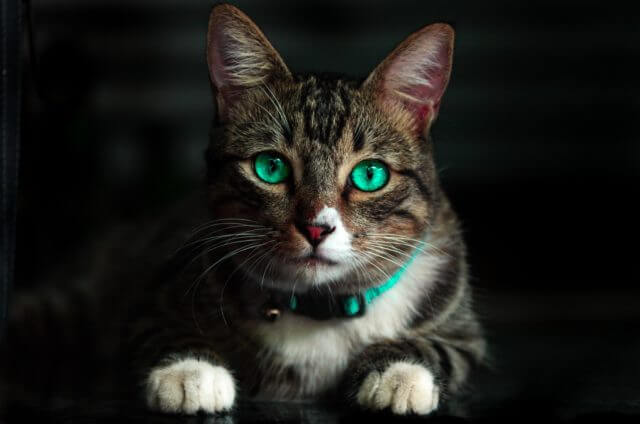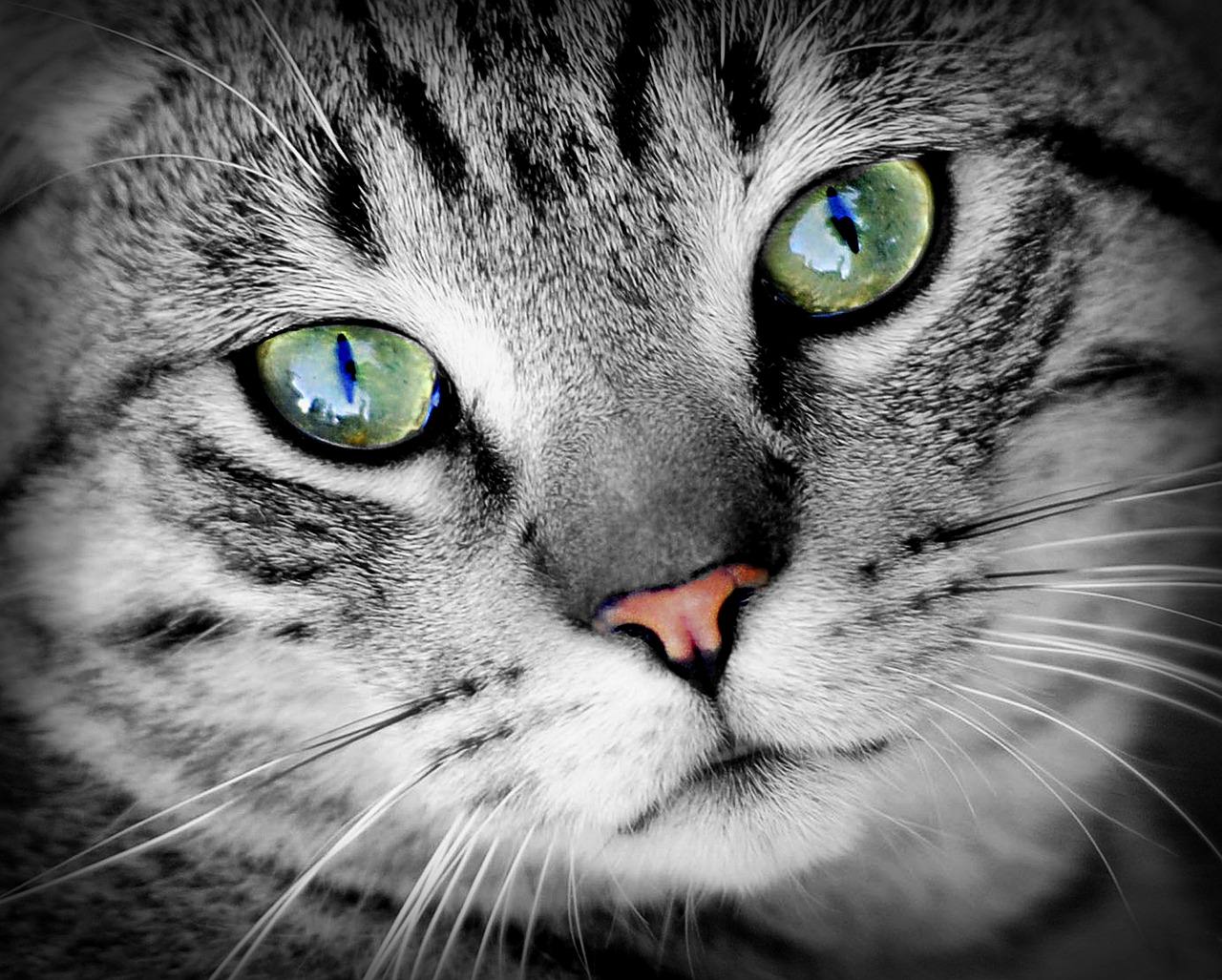Cat eyes are so beautiful that jewels have been named after them. Cat’s eye (chrysoberyl) is a gemstone of the alexandrite family that is known for lovely optic phenomena that resembles the slit pupil of a cat’s eye. Real cat eyes are stunning as well, and it is important that we know about them to keep them healthy.
Front and Center
Our cats’ eyes take up a lot of “real estate” on their faces. They have binocular vision, meaning both of their eyes can focus together and provide them with better depth perception. As a hunter, cats need to be able to focus on prey. This is important because large, forward-facing eyes on our curious cats (that have their faces in lots of places) are vulnerable. Cats are at risk for corneal scratches and irritation from the size and placement of their eyes, coupled with some of their other tendencies, like defending their territory from rival cats. Front-facing eye placement makes it easier for cat lovers to observe for changes too, so it is not all bad!
Running From Danger
We are talking about running from the eyes or ocular discharge. Normal eyes do not drain. A watery discharge, especially if it has any color to it (yellow, green or even bloody), is a sign that you should call your vet right away. Some cats have ongoing tear issues that cause chronic drainage, but if you notice that your cat’s eyes are draining, you should show your vet to be sure that there isn’t something that can be done. Acute (sudden) eye discharge is probably going to require treatment and can be a sign of a systemic upper respiratory infection that will need treatment. All cat owners need to know that ocular discharge is not technically normal.

Don’t Turn A Blind Eye
Blindness is sometimes seen in cats and occasionally the owners are not even aware. Cats are so good with their other senses and so familiar with their homes and territories, they can accommodate well for vision deficits. Cats are predisposed to infectious causes of ocular disorders like Feline Leukemia, Feline Immunodeficiency Virus and others. If you notice even subtle changes in your cat, be sure to ask your veterinarian. There may be treatments that could change the outcome for your cat. Don’t wait. It is better to be safe than sorry.
Do you want to know more about cats and other animals? Follow me on Facebook by clicking here.

